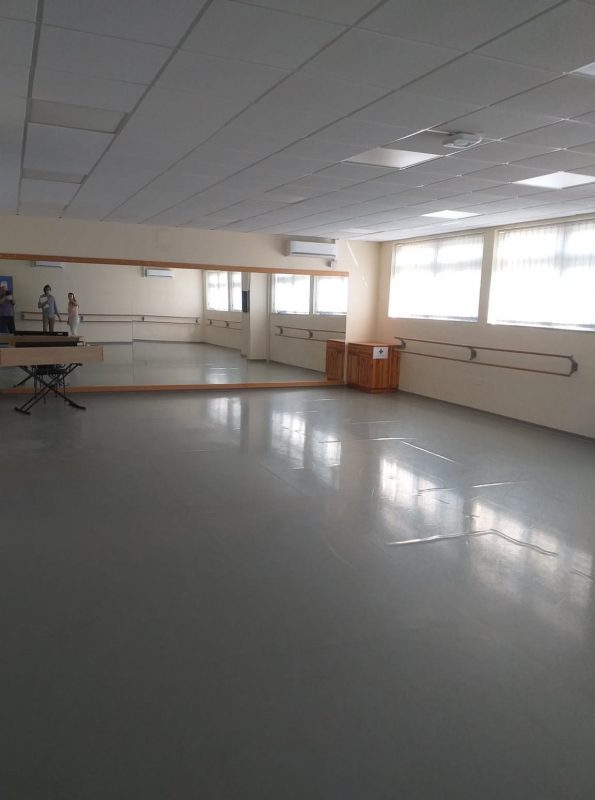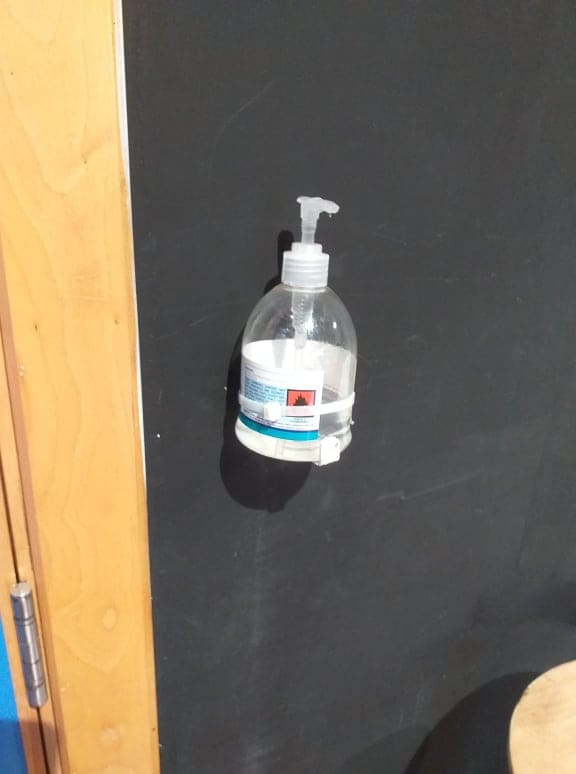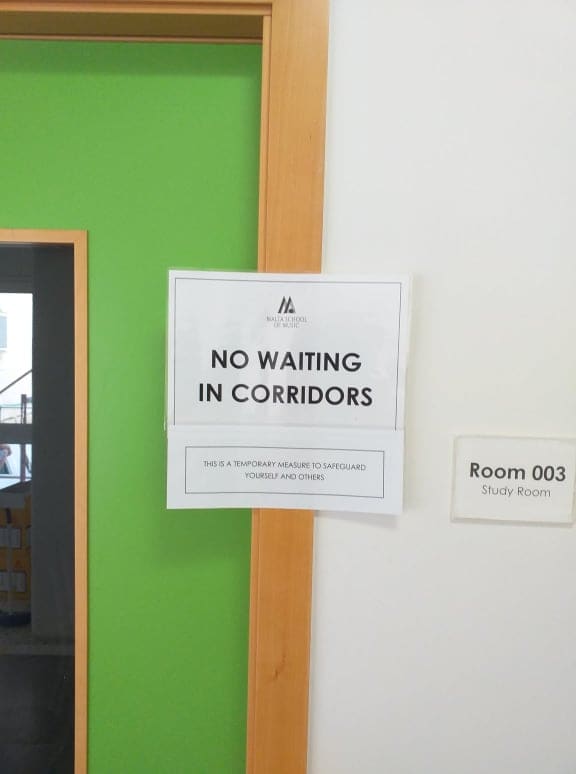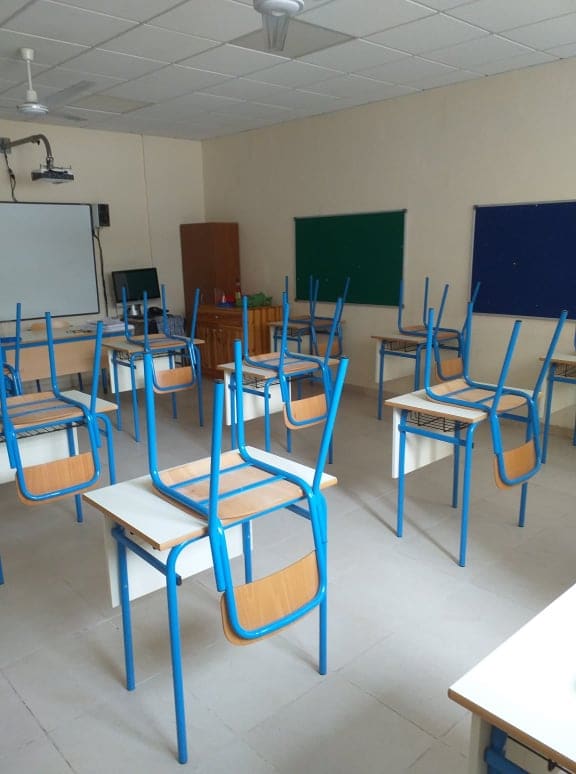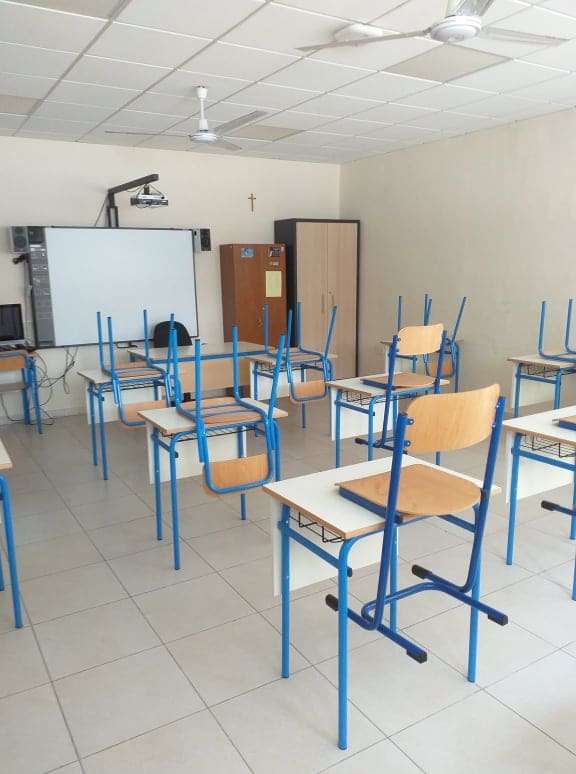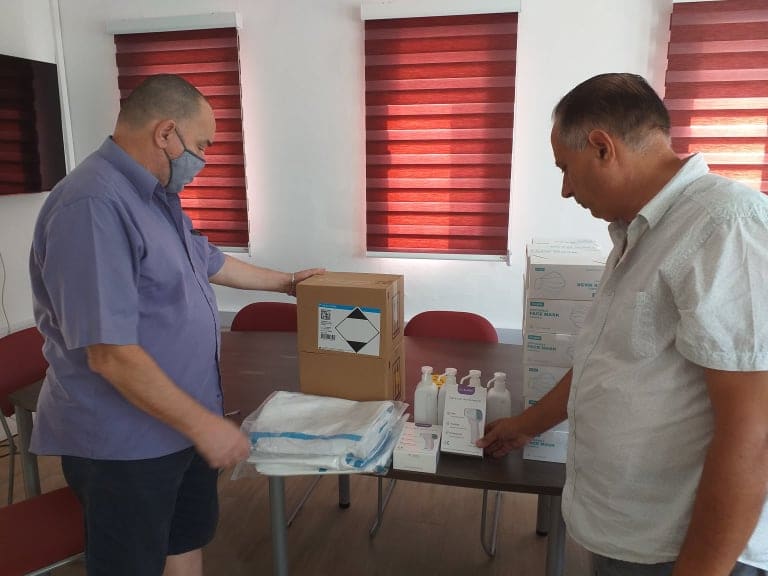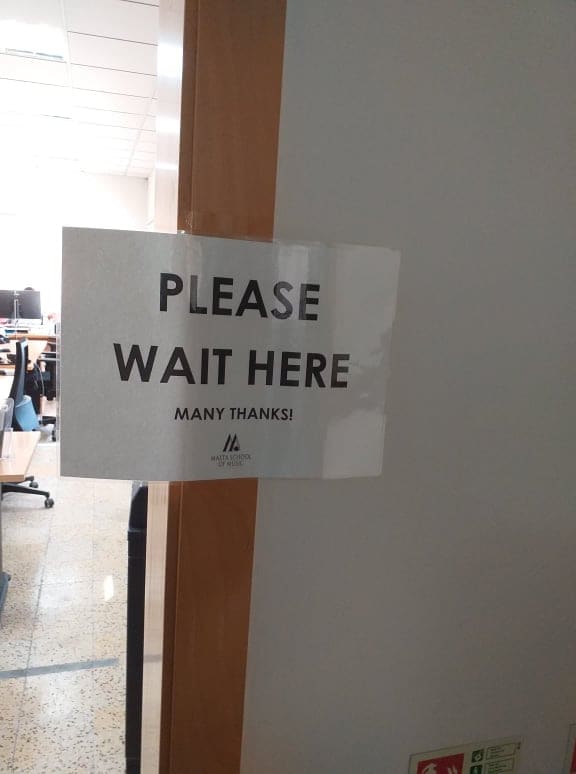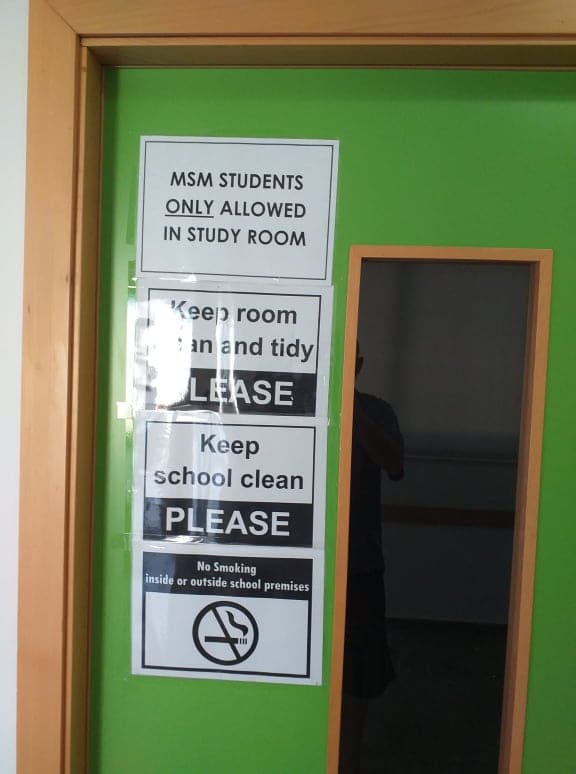
PARENTS / GUARDIANS AND STUDENTS
1. Temperature of the student should be taken before entering premises. Online teaching is encouraged where possible. For in-person learning, attendance for each student is to be accurately and timely recorded.
2. Parents and guardians of learners are not allowed on the premises, irrespective if the age of the learners. Parents / guardians should wait outside the premises using social distancing measures. It is recommended that classes should be timetabled to avoid having more than 15 parents / guardians waiting outside at the same time.
3. It is recommended that students arriving more than 10 minutes early should be asked to wait outside and not to gather in the main entrance.
4. When wearing jackets, parents / guardians of younger students should take jackets home with them and then bring them back for the student to wear when exiting. These jackets should be handed to parents before entering the building.
5. It is recommended that no food and drink should be allowed on the premises. Only water in a reusable bottle is allowed and no sharing of water should be permitted.
6. Where possible, students are to come ready dressed in their uniform. Change of shoes or uniform required for different lessons should be placed in a clearly labelled bag and where possible placed in a locker marked with the name of the student. Lockers should be disinfected after every use.
7. All items are to be clearly labelled with the students’ name. Non-Labelled items will be disposed of at the end of the day.
8. Sick students are to be sent home immediately. If the parent / guardian is not there, the sick child should remain in an ‘isolation room,’ which should be sanitized once the student leaves.
9. Anyone traveling overseas must not come to the studios for 2 weeks after the date of return. Students are requested to present copies of their boarding pass or boat ticket.
10. Where a break is necessary, this is to take place in the studio itself or in an outside area. It is recommended that no breaks should be allowed in the waiting areas.
11. On arrival, students are to go directly to class.
12. Students are to sanitize their hands before and after class.
13. Students are to enter wearing masks or visors and keep them on until the session starts. Masks/ visors need to be marked/labelled. Students over the age of 11 are to wear masks during the sessions unless performing high level energy activities. Children between the ages of 3 and 11 are to wear masks when outside the classroom.
14. Where possible, students are to remain in their own bubbles/groups in fixed spaces. Bubbles need to be as small as possible.
15. Students should avoid touching mirrors, piano and sound equipment in a studio. Only the necessary equipment should be available in the studio
16. Keeping an appropriate physical distance of 2 metres from others is always to be maintained as much as possible in all areas.
17. Where possible markings indicating social distancing are made in all areas
18. The maximum numbers recommended by the health department should be adhered to at all times on the basis of a distance of 1.5 metres between students in the classroom .
19. Practice of respiratory etiquette should be followed and encouraged.
20. Students should avoid touching eyes, nose and mouth at all times but particularly with unwashed hands
21. It is recommended that each student should have their own sanitizer.
22. Students are not to share items unless they are wiped before change of use.
23. Students who have shorter lessons are encouraged to refrain from using the toilet facilities.
24. Certain activities such as singing, choirs, chamber music, ensembles, orchestral performance, acting & drama as well as dance may present additional risks and each school needs to assess these risks and mitigate in ways where students would be able to continue to attend such lessons, such as using outdoors whenever possible, minimizing student contact, and extend social distancing to 2.5 metres from the 1.5metres norm.
25. Shared food such as birthday cakes or Christmas parties are forbidden.
26. Communication from the parents/guardians with School’s staff and management for day to day necessities can only be done through online services.
STUDIOS – building and facilities
1. Toilets must be cleaned regularly. A log detailing the time when the toilet facility has been cleaned and by whom should be filled in for each toilet facility. No cloth towels will be available but disposable towelling will be used instead.
2. Floor cleaning should be carried out more regularly and frequently throughout the day, and as necessary. The following areas should be cleaned particularly thoroughly and, if possible, several times a day in heavily frequented areas: door handles and any other handles on drawers, windows, etc., stairs and handrails, light switches, tables, phones, and all other grip areas.
3. Proper indoor ventilation is essential. In order to ensure adequate circulation of air, and to reduce the level of pathogens in the air, windows and/or doors should be kept open throughout the use of the studio, room, class or workshop to allow for cross ventilation.
4. The use of equipment is to be avoided as much as possible and where possible students should be asked to bring their own. When using school equipment, students are responsible for sanitizing them after use. Equipment for children aged 3 to 8 should be sanitized by the tutor after every use.
5. Where possible separate entrances and exits should be used. Where not possible, class times should be staggered to avoid children entering and leaving at the same time.
6. Payment of fees should be made electronically where possible. It is recommended that no cash should be accepted.
7. A Sanitizing carpet is recommended at the entrance of the building.
8. Posters with reminders of preventive measures should be prominently available in all areas.
9. Sanitizers and tissues need to be available inside the studio and in waiting areas.
10. Collaborators and contractors who provide services to the school are to abide by these same guidelines when providing a service to the school (masks, taking of temperature, signing on visitors’ sheets, sanitising hands and objects, etc).
11. All precautions are to be constantly taken to ensure that water systems are safe to prevent the risk of infections derived from water such as Legionnaire’s disease.
DRAMA STUDIO MEASURES
1. For one to one drama, tempered glass or acrylic screens should be used where possible. If no screens are available, it is suggested that the tutor conducts side by side teaching respecting the 1.5m distance wherever possible.
2. Photocopies or personal scripts are encouraged so that sharing is avoided
3. Any chairs, props used by the students are to be sanitized unless they are personal property of the student.
4. Where loud speaking is being used social distancing should be longer than 2 metres and adapted accordingly.
5. Physical contact games and exercises are to be kept to a bare minimum
6. Ensemble work is to be kept to a bare minimum and where possible is done virtually.
7. Work on monologues and small group scenes is encouraged.
8. If no sanitizing carpet is available at the entrance, students should remove shoes and leave them outside the studio.
9. A minimum of 1.5 m is to be kept between students except for activities which require loud speaking where the recommended distance should increase to 2metres or longer.
10. When it is not possible for the teacher/educator to mount in-person performance with the students, it is strongly recommended that virtual theatre productions are created with possible live streamed performance of students.
11. No physical correction of work will take place by the tutors but where possible necessary written feedback is done online.
MUSIC STUDIO MEASURES
1. The number of vocalists and instrumentalists is encouraged to be kept to soloists or small groups.
2. The length of instruments should be accounted for when determining physical distancing between individuals.
3. Suggested minimum distance between singers and wind instrumentalists should be a minimum distance of 2.5 m. Minimum distance for all other musicians is suggested at 2.0m
4. A tempered glass or acrylic screen should be considered between tutor and musicians. This barrier should be sanitized after each use. Where barriers are not possible, side to side teaching is recommended.
5. Musicians should be encouraged to face away from each other when performing in groups.
6. Performers should wear masks/visors, if physical distancing cannot be maintained between instrumentalists.
7. Equipment should not be shared and if any items are shared these must be disinfected after use and between users
8. To reduce the risk of exposure, cleaning of instruments with saliva build-up should be done outside the group setting directing the saliva into a disposable container. Hand hygiene should follow each cleaning of instrument.
9. Theory lessons are to be done wearing masks/visors when students are over 11.
10. Aural tests are to be conducted wearing masks/visors and with the student facing away from the tutor.
11. Students are to bring their own writing equipment and sheet music/scores/journals.
12. It is recommended that the number of participants in singing groups, school choir and ensembles should be kept as small as possible and the School shall follow the standards for choirs as issued under the Public Health Act Chapter 465 of the Laws of Malta: https://deputyprimeminister.gov.mt/en/health-promotion/covid19/Documents/mitigation- conditions-and-guidances/Standards-for-Choirs_27Aug20.pdf
13. It is strongly recommended that virtual productions of performances by students are created with possible live streamed performances.
FINE ARTS MEASURES
1. During discussion and evaluation of artworks, students take turns to talk while remaining in their place seated or standing up.
2. Small working groups recommended.
3. Social distancing in any art-studio will always be respected and the minimum of 1.5m between each student’s working station is kept.
4. Wherever possible, lessons are to be held outdoors
5. Students are required to bring their own materials e.g.: pencils/ pencil colours/ paintbrushes/ markers/ glue/ safe scissors/ crayons/ pastels/ rulers/ erasers/ palettes/ recycled materials/ drawing-book/ art journal.
6. When the school provides materials and equipment, these will be tagged with the name of the students so that each student uses their own material. No sharing of such materials can be allowed.
7. Materials that are only used within a lesson timeframe, such as paints can be provided to students, pouring it on palettes that they bring and clean up afterwards. Equipment such as printing presses will need to be wiped down between each individual student. Lessons are to stop 15 minutes before the end of lesson in order to clean and students are to take single turns at the sink. They need to wipe hands and palettes in their own towels/ old T-shirt.
8. Group work or pair work on the same artwork, is to be avoided.
9. Monitoring of students’ work and progress has to happen from a distance of at least 1.5m using Peer-Evaluation where students are asked to stand up, show their sketches/artwork and to talk about their work-in progress (self-evaluation).
10. Only artworks that need to dry are left in the art room. Students collect finished dried artworks in their Portfolios and Art Journals.
11. Wearing, of visors or masks is obligatory for students over the age of 11 years throughout art lessons due to the interactions that might take place.
12. Students should keep to their own space for the entire session whenever possible while the teacher/educator will move around the space without necessarily touching equipment/s.
13. No physical correction of work will take place by the teacher/educator but where possible necessary feedback is given online.
DANCE STUDIO MEASURES
1. Small working groups are recommended
2. A minimum of 1.5 m is to be kept as much as possible between students during theoretical teaching and masks / visors are to be worn.
3. A minimum of 2.5 m is to be kept as much as possible between students during practical dancing sessions and masks / visors are not to be worn.
4. Teachers are to move around the space without contact with the students where possible. Sanitizing is to take place after physical contact.
5. Students are to use own resources and no sharing will be allowed
6. Equipment is to be sanitized between each lesson. Students are encouraged to sanitize their own workstation.
7. Physical contact is to be kept to a bare minimum.
8. Ensemble work is to be kept to a minimum.
9. It is recommended that students are not allowed to enter the studios with outdoor shoes. Shoes need to be wiped before entry to studios. Use of the sanitizing carpet is strongly encouraged.
10. No use of changing facilities should be available on the premises. It is recommended that students are to be given designated areas to leave their belongings.
11. It is strongly recommended that virtual productions of performances by students are created with possible live streamed performances.
12. No physical correction of work will take place by the teacher/educator but where possible necessary feedback is given online.

